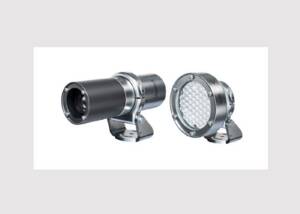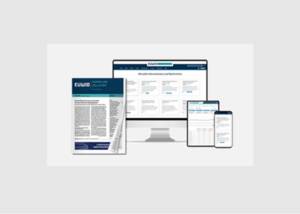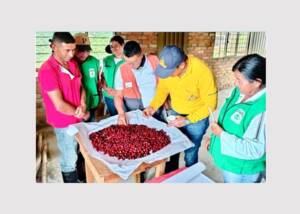UPM Half-Year Financial Report 2022: UPM delivers record Q2 earnings with successful margin management in exceptional business environment
News General news
Q2 2022 highlights
- Sales increased by 7% to EUR 2,562 million (2,384 million in Q2 2021)
- Comparable EBIT grew by 26% to EUR 387 million, 15.1% of sales (307 million, 12.9%)
- Operating cash flow was EUR -879 million (308 million), impacted by cash flows from energy hedges. Other operating cash flows were largely as expected
- The rise in energy futures prices was unprecedented, as was the related short-term cash flow impact from energy hedges.
- Respectively, it indicates strong earnings potential of UPM Energy
- Sales prices increased in all business areas and more than offset the negative impact of higher variable costs
- Cash funds and unused committed credit facilities totalled EUR 1.5 billion at the end of Q2 2022
- Transformative growth projects in Uruguay and in Germany proceed well
- In May, UPM announced the acquisition of AMC AG to accelerate growth and enter new product segments in UPM Raflatac
- In June, UPM announced the sale of the Steyrermühl site in Austria to secure competitiveness and adapt newsprint production to the long-term market development
H1 2022 highlights
- Sales increased by 10% to EUR 5,069 million (4,618 million in H1 2021)
- Comparable EBIT increased by 13% to EUR 664 million (586 million), and was 13.1% (12.7%) of sales
- Operating cash flow was EUR -867 million (526 million), impacted by cash flows from energy hedges in the highly exceptional energy markets
- Net debt increased to EUR 2,688 million (750 million) and net debt to EBITDA ratio was 1.42 (0.49). A significant part of the increase in net debt is temporary, due to the cash flow impacts of energy hedges and future energy generation
- UPM decided to suspend its deliveries to Russia, purchasing of wood in Russia and the UPM Chudovo plywood mill operations
- The strike in Finland affected production and delivery volumes especially in the pulp, paper and biofuels businesses.
- Estimated full-year earnings impact is not material
- In April, UPM and Paperworkers’ Union agreed on first-ever business-specific collective labour agreements and the strike ended at UPM mills in Finland

Jussi Pesonen, President and CEO, comments on the Q2 results:
“UPM delivered record Q2 earnings driven by successful margin management in exceptionally tight markets for our products. All our businesses reported strong earnings amidst a volatile environment of rapid inflation in input costs and challenging supply and logistics chains. In addition, customer deliveries from our Finnish mills started smoothly after the end of the strike in late April. As a result, our quarterly sales increased by 7% to EUR 2,562 million, and comparable EBIT increased by 26% to EUR 387 million. This was a great achievement taking into account that during the first half we only had one month of normal full production. For the full year, we expect to reach a new record of annual earnings.
Operating cash flow was EUR -879 million and our net debt at the end of the quarter was EUR 2,688 million. Cash flow was significantly impacted by the timing of cash flows from our energy hedges during an unprecedented rise in energy futures prices. Due to the nature of our hedging activity, this cash flow is expected to reverse in the future, meaning that a significant part of the increase in net debt is temporary. Our financial position remains strong, with cash funds and unused committed credit facilities totalling EUR 1.5 billion at the end of Q2. We further improved our liquidity in July, with two new credit facilities totalling EUR 500 million. This gives us a solid base to push on with ongoing transformative growth investments and face the unpredictability of the operating environment.
Market fundamentals for UPM Fibres were strong in Q2, for both pulp and timber. Production at the Finnish pulp mills started well after the business specific collective labour agreements were signed in April and two major maintenance shutdowns were completed.
UPM Communication Papers had a strong quarter. Demand for graphic papers was good and price increases exceeded the rise in input costs, with the cost of energy posing a particular challenge. During the quarter we announced the sale of UPM Steyrermühl, in Austria. This is another step in securing competitiveness of the Communication Papers business, adjusting our newsprint production to the long-term market development. Newsprint production at the mill will stop at the end of next year.
UPM Specialty Papers’ results showed an improvement from the first quarter. Demand and prices of release liner and packaging papers continued to be good, while the Asian fine paper markets were softer, impacted by the lockdowns in China. Sales prices increased, but input costs were still on the rise, and exchange rates did not develop in our favour.
UPM Raflatac’s quarterly result continued at record level despite sales volumes being limited by raw material availability and sales to Russian markets being discontinued. Demand was healthy, and margins were well managed in the environment of high-cost inflation. UPM Raflatac announced the acquisition of AMC AG in Germany, to accelerate growth and expand its product offering. The necessary regulatory approvals for closing the acquisition are expected to be granted in Q3.
UPM Energy reported strong quarterly results as energy markets were very volatile and prices high, providing value creation opportunities for our hydropower generation. In June, prices of energy futures saw an unprecedented rise, resulting in extraordinarily high cash outflow of our energy hedges, totalling EUR -1,032 million in Q2. As our energy hedges are only for hedging our existing electricity generation portfolio, this cash outflow will later be offset by a similar cash inflow from hedges or production.
All in all, there is exceptional uncertainty and tightness in the energy markets. This indicates strong earnings potential of UPM Energy. Furthermore, the OL3 nuclear power plant unit will increase UPM Energy’s carbon free electricity generation by nearly 50% at an opportune time.
UPM Plywood’s earnings stayed at near-record levels. Plywood markets were tight in all end-use categories. As the world’s first plywood manufacturer, UPM launched the lignin-based bonding technology throughout its entire range of products. WISA® BioBond helps customers meet their own sustainability targets.
In other operations, the markets for UPM Biofuels’ advanced renewable fuels are favourable, and strong earnings are to be expected once the business can report a full quarter of production again.
Our Paso de los Toros pulp mill project, in Uruguay, has proceeded smoothly and the commissioning phase is now underway. The commissioning plan was granted approval by the Uruguayan environmental authorities in late June. Testing of pulp production equipment at the mill has begun, and other commissioning tasks and the respective adjustment of production equipment will be carried out until the start-up of the mill in Q1 2023.
Construction at the biorefinery-site in Leuna, Germany, has progressed well and commercial activities in various product and application areas have continued to advance. The environmental benefits of the biorefinery and the UPM Biochemicals portfolio have been publicly acknowledged with several nominations. The detailed commercial and basic engineering study for a possible next generation biofuels refinery in Rotterdam, Netherlands, has continued.
Rarely have there been so many uncertainties in the world and in the global economy as there are today. We are well prepared to face this uncertainty as our businesses are competitive and performing well, and our financial position is strong. This year, we are expecting our annual earnings to reach new record highs. Some of the uncertainties in the medium-term outlook are mitigated by our growth projects, which will add significant new earnings, ramping up as early as next year. Over the longer term, I am confident that UPM’s Biofore strategy is well-calibrated to provide what the world will need in the future: competitive zero-carbon electricity and sustainable and renewable materials with countless possible end-uses."
Outlook for 2022
UPM’s comparable EBIT is expected to increase in 2022 from 2021, and in H2 2022 from H2 2021.
Significant uncertainties remain in the outlook for 2022, related to the war in Ukraine, the ongoing pandemic, growth in the European and global economy, the energy prices and availability in Europe, the start-up of the OL3 power plant unit, and the tight raw material and logistics markets.
In the first half of the year, production was significantly affected by the strike at the Finnish units of UPM Pulp, UPM Biofuels, UPM Raflatac, UPM Specialty Papers and UPM Communication Papers. This no longer limits production and as a result, UPM’s delivery volumes are expected to increase in H2 2022 from H1 2022. In the full-year 2022 result, the estimated impact of the strike is not material.
Sales prices and variable costs are expected to be higher in H2 2022 than in H1 2022 in most of UPM businesses. UPM will continue to manage margins with product pricing, optimising its product and market mix, efficient use of assets as well as by taking measures to improve variable and fixed cost efficiency.










